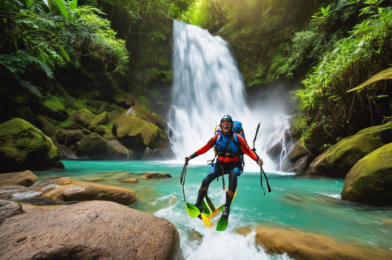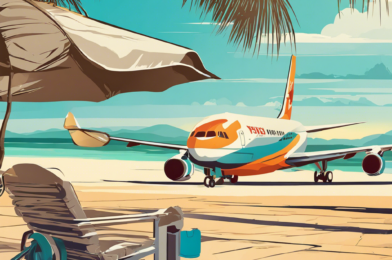Adventure travel is often synonymous with expensive, but it doesn’t have to be that way. With careful planning and a few clever tricks, thrill-seekers can satisfy their wanderlust without breaking the bank. So, whether you’re a seasoned adventurer or a novice explorer, here are some tips to help you plan your next affordable adventure.
Firstly, consider your destination. Opt for lesser-known spots over famous landmarks. Famous sites tend to be more expensive due to higher tourist traffic. Instead, look for hidden gems that offer similar experiences but with smaller price tags. For example, instead of skydiving in Switzerland, try paragliding in Georgia, offering stunning views of the Caucasus Mountains at a fraction of the cost.
Secondly, embrace the sharing economy. Utilize services like Airbnb, where you can find unique accommodations that are often cheaper than hotels. Sharing a room or apartment with other travelers can significantly reduce costs. Also, consider ride-sharing services like BlaBlaCar, which can be a more affordable and flexible alternative to renting a car.
Another great way to save money is to travel during the off-season. Prices tend to drop significantly during these periods, and you’ll also benefit from fewer crowds. For example, if you’re planning a hiking trip in the Alps, consider going in early autumn instead of peak summer. You’ll still have good weather, but you’ll avoid the higher prices and busier trails of the high season.
Pack smart and pack light. Adventure travel often involves a lot of moving around, so you don’t want to be burdened with heavy luggage. Ensure you bring versatile clothing that can be layered for different activities and weather conditions. Also, remember that many outdoor items, like sleeping bags and tents, can be rented at your destination, saving you money on buying specialist gear.
These are just a few strategies to help you embark on affordable adventures. By thinking creatively and being flexible, you can create unforgettable travel memories without spending a fortune. So, start planning your next thrilling journey, and keep an eye out for more budget-friendly adventure travel tips to make your experiences even more accessible and exciting!
Remember to keep an open mind and be willing to step out of your comfort zone. Some of the best adventures are those that surprise us and push us to try something new. Lastly, don’t forget to document your journeys. Whether through photography, journaling, or sharing your experiences online, documenting your trips will allow you to relive the excitement and inspire others to follow in your adventurous footsteps.
I hope you enjoyed reading, and please let me know if you would like me to adjust or expand this article in any way.









